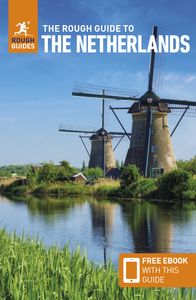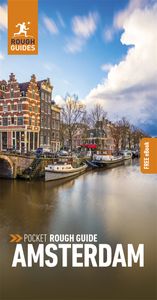Architecture as social utopia: The Amsterdam School
At its peak from around 1910 to 1930, the Amsterdam School brought together the leading Dutch architects of the period in a loose alliance that was Expressionistic in style and politically committed: the School’s leading practitioners were eager to build housing for the working class that was of the highest possible standard. Several of these utopian ventures have survived here in Amsterdam, but perhaps the most architecturally pleasing is the delightful Het Schip just west of the city centre. A municipal housing block designed by Michael de Klerk (1884–1923), it takes its name from its ship-like shape and is graced by all manner of decorative details, such as wavy brick facades and misshapen windows.
The Museum Het Schip
Housed inside the complex’s former post office at Spaarndammerplantsoen 140, the Museum Het Schip (Tues–Sun 11am–5pm; €7.50; w hetschip.nl) explores the history of the Amsterdam School and details the building’s principal features. Regular half-hour guided tours take you inside one of the restored residences – the block is still used as social housing today – and up to the main turret. It takes about 15min to get there from Centraal Station on bus #22 – get off at the terminus and it’s a short walk.
A scenic stroll around the Jordaan
The streets and canals extending north from Rozengracht to Westerstraat form the heart of the Jordaan and hold the district’s prettiest moments. Beyond Rozengracht, the first canal is the Bloemgracht (Flower Canal), a leafy waterway dotted with houseboats and arched by little bridges, its network of cross-streets sprinkled with cafés and bars. There’s a warm, relaxed community atmosphere here which is really rather beguiling, not to mention a clutch of old and handsome canal houses. Pride of architectural place goes to Bloemgracht 89–91, a sterling Renaissance building of 1642 complete with mullion windows, crow-step gable, brightly painted shutters and distinctive facade stones, representing a steeman (city-dweller), landman (farmer) and a seeman (sailor).
From Bloemgracht, it’s a few metres north to Egelantiersgracht (Rose-Hip Canal), where, at no. 12, Café ’t Smalle is one of Amsterdam’s oldest cafés, opened in 1786 as a proeflokaal – a tasting house for the (long-gone) gin distillery next door. In the eighteenth century, when quality control was intermittent, each batch of jenever (Dutch gin) could turn out very differently, so customers insisted on a taster before they splashed out. As a result, each distillery ran a proeflokaal offering free samples, and this is a rare survivor. A narrow cross-street – Tweede Egelantiersdwarsstraat and its continuation Tweede Tuindwarsstraat and Tweede Anjeliersdwarsstraat – runs north from Egelantiersgracht, flanked by many of the Jordaan’s more fashionable stores and clothing shops as well as some of its liveliest bars and cafés.























